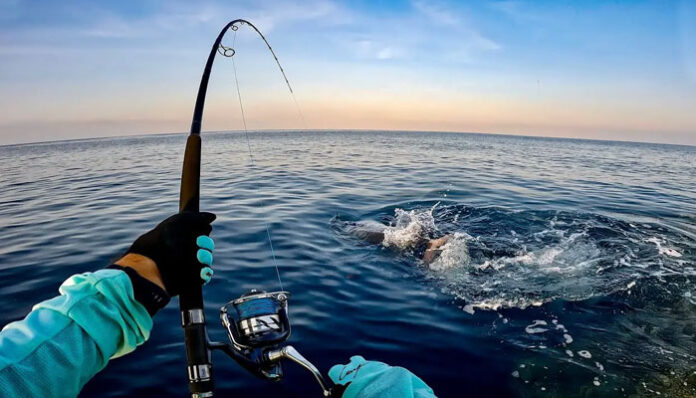Trout fishing is a popular pastime for many anglers, but it can be intimidating for beginners. Here are some essential tips to get you started:
Fishing Techniques
Trout are primarily freshwater fish and feed on a variety of small insects, filets, and zooplankton. They can also be finicky feeders but are usually willing to bite on bait that resembles their natural foods. Live worms, such as red wigglers, are a popular choice because trout often recognize them as food. Plastic worms and other artificial lures, such as minnows, grubs, and fish eggs, are equally effective.
A float rig is generally the most effective method for trout fishing in lakes and ponds.
In rivers, use a split shot rig. This allows you to target different depths without snagging the bottom. Trout are more active at dawn and dusk, so use metal spinners or casting spoons that imitate the movement of a fleeing baitfish. When the bite slows down at midday, switch to a crankbait or jig to trigger strikes.
Flies
Flies are an essential part of a fly fishing kit, and it’s helpful to learn what each type is meant for. Nymph flies look like the insect larvae trout feed below the surface, and they should be in every trout angler’s tackle box. They are a great option for those times when the trout don’t rise to eat a fly on the surface, or when you can’t tell what the bugs are eating.
Attractors, on the other hand, don’t look much like an insect at all. They use bright colors and shiny materials to catch the attention of the fish, allowing you to get your fly closer to them.
It’s important to remember that trout can be very finicky. They’ll often eat one thing on certain days, and another thing the next. Learn to read a river, and don’t be afraid to try different things on each trip. You’ll soon find what works and what doesn’t for a given run.
Bait
Trout anglers typically fish either lakes and ponds or rivers and streams. Bait choices, hook size, and fishing tactics differ significantly between these two types of waters.
If you’re looking for budget fishing gear and equipment, look no further than the Sports & Outdoors Discount Code! With our special discounts, you can find all the fishing gear you need without breaking the bank. From rods and reels to bait and tackle, Sports & Outdoors Discount Code has it all. Don’t let high prices keep you from enjoying your favorite hobby. Shop with us today and save big on fishing gear and equipment.
Live worms are the most common trout bait. Small jigs tipped with a worm also catch trout. In moving water, a split shot with 1 or 2 small weights positioned about a foot above a hook rigged with live bait can be very productive. A floating tube imitating zooplankton or other snacks is another good trout bait choice.
If you’re planning to fish a river, learning to “read” the current is important. Look for areas of slower current flow that provide cover and carry food. You can often find active trout at these locations, particularly in the morning and evening. Many anglers also catch trout by casting metal spinners or spoons and slowly retrieving them to mimic a baitfish or crustacean.
Equipment
When it comes to trout fishing, there is a wide range of gear available for beginners. The best approach is to start with ultralight tackle – small reels and rods. A 6-7 foot spin rod paired with an ultralight spinning reel is a good choice for most situations.
If you’re interested in casting artificial flies, then you’ll need an array of fly fishing rigs with hooks ranging from size 10 to size 4. If you want to fish for trout using natural bait, nightcrawlers, earthworms, salmon eggs or mealworms are popular choices.
Keep in mind that trout live close to their environment and are very sensitive. They can see you from about 15 yards away and will react to the slightest vibration or noise. Approach the water carefully and avoid spooking any trout that are actively feeding. Fish downstream whenever possible to spook fewer trout and allow your bait or lure to drift naturally in the current.
Know Where You’re Going
Trout are small fish that require light tackle, so you’ll want to start with a trout fishing rig that includes a lightweight reel and rod. This is also a good time to buy an inexpensive trout fishing guidebook.
If you’re looking for a good deal on a fishing rod and reel, consider using a FishUSA Promotional Code. With this code, you can save money on your purchase and get a reasonable price for a quality product. FishUSA offers a wide selection of rods and reels to choose from, so you’re sure to find one that fits your needs and budget. Don’t miss out on this opportunity to save money while still getting a great fishing experience!
The best trout fishing spots are often rocky areas, which provide hiding places for the fish as they wait for aquatic insects to wash downstream. Look for pools or runs where the water slows down, and find a shady spot to fish.
The speed of the water will affect how fast your flies float on the surface, so minimize additional drag by manipulating the angle of your fly line.
Know Your Rod
Trout are typically found in clear, cool water and can be caught using a variety of methods. The most common trout fishing technique is bait rigs, which involve placing dough-type bait beneath a lead weight, usually with a bobber suspended about 1 1/2 feet above the bottom of the lake.
Bait rigs are best used in lakes and ponds, while fly rigs are best in rivers and streams. Learning how to read a river is essential, and this will come with time and experience on the water. Understanding the basics like seams, riffles, and pools can help you spot where trout are hiding, increasing your success.
Know Your Line
Trout are opportunistic feeders and will eat either live bait or artificial lures depending on what’s available in the water. They’ll hug the bottom in the river and stream habitats looking for crustaceans, or fly up at the surface for midges and hoppers.
If fishing a lake or pond, use a simple bait rig with a dough bait under a slip float and bobber. It’s a good option for kids or new anglers as trout will often strike when the float is swept past by a current. When it comes to rivers, learning to read the water takes time and experience. Getting a feel for where the trout are hiding in each pool, riffle, and seam will help you find more fish.
Know Your Flies
The majority of trout’s diet consists of nymphs (insect larvae). This is a great place to start when fly fishing, as they are often readily taken by trout.
A good tackle shop will have a hatch chart that will show what kinds of bugs are present in the area you’re fishing. This can help you zero in on the best flies to try.
Beginners also often make the mistake of trying to cast too far, when a simple roll cast will do just fine. This is especially true when casting to a seam, where currents meet and create feeding lanes. Trout love to hang out in these spots, and the simpler your presentation, the better.
Know Your Bait
Trout are scavengers that prefer to feed on small invertebrates, zooplankton, and insects. They are also opportunistic and will take almost any bait that is presented to them in their natural habitat.
For beginners, a simple bait rig is the way to go. Use a bait holder to keep your bait secure and add a slip float that can be adjusted to vary your depth in the water column.
Crankbaits that mimic baitfish, crustaceans, and large terrestrial insects are ideal. Try using a slow retrieve and pauses to imitate the movements of the trout’s prey. On some days, trout may become highly selective and focus on one particular food source.
Know Your Water
As you head out to fish, it’s important to know your water. Trout thrive in cool, clear water and require certain conditions to survive. They also have a very specific diet, eating primarily invertebrates until they reach about a foot in length.
The best trout fishing spots can be found in streams, rivers, creeks, and ponds. They can be stocked or wild, and anglers must review local rules and regulations to ensure they comply.
Learning to read the water can take time, but start by looking for areas where currents collide. Seams, riffles, and pools are good places to start. They’ll provide trout with a feeding lane that directs their bait or fly into the strike zone.
Conclusion
Trout are primarily freshwater fish and feed on a variety of small insects, filets, and zooplankton. Trout are small fish that require light tackle, so you’ll want to start with a trout fishing rig that includes a lightweight reel and rod. The most common trout fishing technique is bait rigs, which involve placing a dough-type bait beneath a lead weight, usually with a bobber suspended about 1 12 feet above the bottom of the lake.



